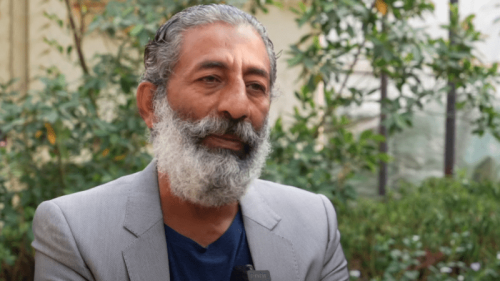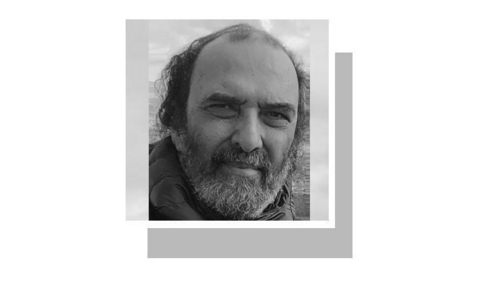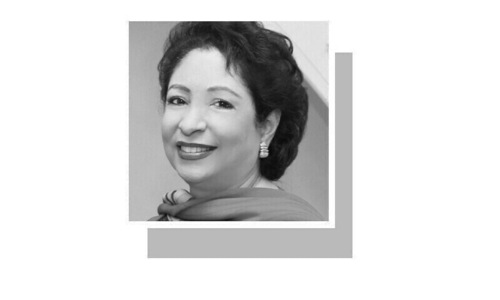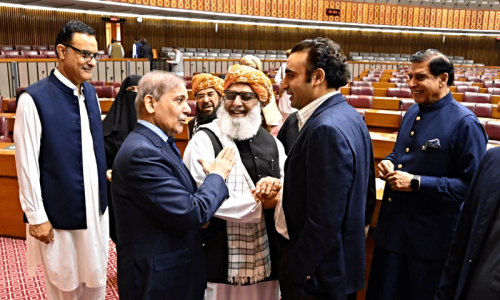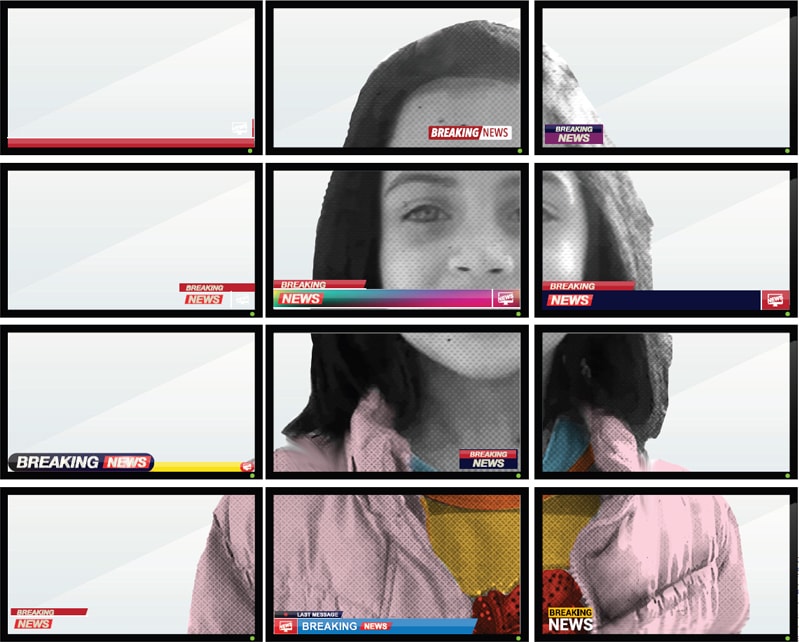
Sometimes an incident shapes a national narrative and sparks public action.
On January 4, 2018, a six-year-old girl in Kasur was kidnapped, raped and murdered. Cue the entrance of the media — print and electronic — to the scene. But while the incident itself could have been a watershed moment on child abuse, gender-based violence and legislation around child rights, the media took it upon themselves to rouse emotions and push the case towards its conclusion.
Perhaps this was an exercise in mismanaged morality.
Today, the highly publicised rape case has gone on the backburner for the media. There is little noise on the legislation front. And people, too, seem to have either forgotten or lost interest in the case. This is at odds with how the matter was kept in the public’s imagination for about three weeks. In fact, too much noise around the rape case seemed to drown out the issues at the heart of case: child protection, sensitisation and child rights legislation.
It is, therefore, worthwhile to revisit how the media reported on the case and how its actions seemed to trivialise, and in some cases, obfuscate the nature and gravity of the situation.
Reporting the taboos of society needs a new repertoire as existing norms in the print and electronic media are merely fulfilling the public’s morbid curiosities
The media has a responsibility of shaping perceptions. It does so by what it is reporting, but more importantly, in the language of reporting. For the first three, four days of the incident, words such as ‘nanhi pari’ [little fairy], ‘masoom Zainab’ [innocent Zainab], ‘nanhi kali’ [little bud], ‘darinda sift’ [animal-like] made the rounds on news channels and in print media. The victim’s picture in a pink shirt and her dead body in the dump was a part of every news report in electronic media — some even argue that the case would not have gained as much traction had the girl’s pictures not been used. Then came the CCTV footage of the criminal. The footage was on loop for hours on the news channels.
In this news cycle, did the media seek to inform and educate viewers and readers? Did it build a larger case around child sexual abuse?
The following content analysis investigates how the media reported on the case between January 10 and January 31, 2018. For print, nine newspapers were monitored, including four English-language dailies, five Urdu-language dailies and a weekly magazine. News reports, pictures, articles, editorials, letters to the editor, opinions, cartoons, advertisements and interviews were monitored in the print media. This made for a total of 992 news items that were monitored in print.
For the electronic media, six mainstream news channels were monitored. We monitored an hour-long news bulletin for each channel as well as a current affairs talk show. In three weeks, this amounted to more than 260 hours of electronic news content or 12 hours every day. In total, we went through 386 news items in the electronic news media that pertained to the Kasur child rape case. Following is the outcome of our research.
PLACEMENT OF NEWS CONTENT IN THE PRINT MEDIA
Every newspaper operates on two principles: the “newsworthiness” of a story and commercial interests.
Newsworthiness is about whether a story is timely, significant, has happened close to home and has an element of human interest. The more newsworthy a story, the more prominent its placement in the newspaper. So, for example, the most relevant and pertinent story of the day finds space on the front page, and so on. The op-ed pages contain the newspaper’s editorial line, opinion columns, cartoons, and letters to the editor. As with the front page, the most relevant and timely topics get more space on op-ed pages.
Of the 992 news items monitored in the print media, almost 30 percent of the Kasur-related content was placed on the front pages. About 24 percent content appeared on opinion pages while 32 percent was published on inside and other pages. Only 12 percent of the total news items monitored were on the back pages.
SENSATIONALISED MEDIA CONTENT
Despite the widespread coverage, however, almost one-third of the news items on the Kasur case had elements of sensational content.
Sensationalism in the media is all about hype — events and topics are twisted and turned to suit a certain editorial bias, and worse, manipulate the facts of a story. It plays with the audience’s emotions. It employs the use of fear, anger, excitement and gloom in an attempt to increase viewership, ratings and, of course, profits.
This kind of journalism — inaccurate and exaggerated — is also referred to as yellow journalism.
For the Kasur case, we considered dramatisation in broadcast news as sensational, and in print media, the language and increased reporting frequency as elements of sensationalism.
In fact, the electronic media through its treatment of the rape case turned a gory situation into a circus of sorts. Audiences were drawn in with the Breaking News label in red to reveal a minor update on the case. Displaying tickers with the words ‘Breaking News’ when the news is actually just in is understandable. But labelling a piece of news in the 9pm bulletin as “breaking” even when it actually happened earlier in the day is ludicrous.
This was a moment to be captured for greater good — sensitisation, awareness, legislation — but too much noise turned it into case-specific coverage rather than a phenomenon-wide coverage.
But this was a common practice in some mainstream channels before any news related to the Kasur case was broadcast. Undoubtedly, this creates sensationalism in content.
It wouldn’t be inaccurate to describe most news items on the case being presented as “breaking news” — loud, sensational and with flashy headlines. In the electronic media, for the first three days, the top three or four stories remained Kasur-related while the rest of the stories reported comments from politicians demanding quick and strict action from the government.
Meanwhile, the sound score for nearly every item broadcast was melancholic. One newscaster delivered the news with her minor daughter sitting in her lap. When CCTV footage of the incident found its way to the media, nearly every channel played it on loop for hours as “breaking news.” One channel, BOL News, angled the story in such a way so as to implicate the victim herself: “qatil ke saath galiyon mein ghoomti phirti rahi” [(the victim) was seen roaming around the streets with her murderer].
Similarly, in the print media, for the first three days since the rape, quarter-page sized reports were part of both front and back pages of various dailies. Surprisingly, only 24 pictures appeared as separate news. In some cases, news items took up more than half-page space on the front page while in others, news, opinions and editorial content were entirely focused on the incident. Meanwhile, the Urdu-language dailies ascribed terminologies such as kali [flower bud] and farishta [angel] for the victim.
With huge headlines, a total of 130 news items in the print media out of the 992 monitored were sensationally presented. This makes about 13 percent of the total print content. Electronic media, in comparison, is way ahead of the print media with 76 percent of their content being sensationalised.
POSITIVE MEDIA CONTENT

We define positive news items as those which carry necessary information and updates on the case, which didn’t violate the right to privacy of the victim and her family, focused more on the perpetrator and provided information regarding prevention, guidelines on child protection and sex education as well.
A total of 70 news items (only 5.08 percent) out of 1,378 from both the print and electronic media were positively presented. These included 25 news items from print and 45 from the electronic media. In comparison to the print media, however, positive news content in the electronic media was almost double.
PICTORIAL DEPICTION OF VICTIM AND FAMILY
Almost 20 percent of the news content (264 out of 1,378 news items) had a picture or some footage of the victim or her family members. Some of the news channels had blurred the victim’s image but the print media did not.
On the other hand, the faces and identities of the victim’s family members (especially the father) were not hidden. Almost half the electronic media content (181 out of 386, or 47 percent) contained footage and images of the victim’s family members. Their identities were not hidden. The high-profile VIP visit to their home made the equation even worse.
This is in complete contrast to what ought to be done, or even, what is allowed by the Pakistan Electronic Media Regulatory Authority (Pemra). There are rules and regulations in place which bar this practise of revealing a victim’s face and identity and that of a victim’s family’s. Most of these codes of conduct are voluntarily accepted by news organisations, but whether they implement them is another question altogether.
Consider the Pemra Code of Conduct, 2015: “The licensee shall ensure that … [the] identity of any victim of rape, sexual abuse, terrorism or kidnapping or such victim’s family shall not be revealed without prior permission of the victim or victim’s guardian where victim is a minor.”
But when one channel violates the code, the others follow suit.
VIOLATION OF THE GENDER-SENSITIVE CODE OF ETHICS
Pakistan’s vibrant media sector has historically been dominated by men. Successful journalists who happen to be women are a relatively new phenomenon in the media industry. This meant that reportage on women-specific issues was tainted by what the men thought and believed to be true.
But with the rise of women in the media, there are now more voices trying to report on issues central to the well-being and prosperity of Pakistani women. And yet, the quality and quantum of the coverage and portrayal of women and girls, whether for news, views or entertainment, still continues to demonstrate attitudinal biases, patriarchal and misogynist tendencies, ridicule and disrespect, despite decades of evidence-based training, requests and protests.
Towards that end, a Gender-Sensitive Media Code of Ethics (CoE) was introduced. It is designed to be voluntary and self-imposed by all categories of the media, and within each category at all tiers, with the endorsement and acceptance of the owners, chief executives, editors and the senior management of each media house. It describes the standards, attitudes and behaviours expected of professional journalists, presenters, anchors, researchers, producers, scriptwriters, camerapersons as well as the policymaking editorial staff, senior management and owners of media houses. It pertains to six main areas: Right to Privacy; Pictorial Depiction of Women; Balanced Representation of Women; Projection of Gender Roles in Advertisements; Quality Coverage of Women’s Issues and Maintaining Professional Standards.
In the aftermath of the Kasur child rape case, almost all stipulations of the gender-sensitive code were violated.
There is no doubt that news items were sensationalised and hype was created as the case remained in the top stories for a consecutive three to four days. Throughout this period, very few reports didn’t mention the victim’s name. In fact, the media started referring to the case as ‘Zainab Qatal Case’ — thereby naming the case after her.
This is an unethical practice of journalism.
Mentioning the victim’s name violates the clause of ‘Right to Privacy’ — the first clause of the ethical code for media. First her name, then her age, identities of the family members and finally her residence; everything was made part of the sensationalised media reports.
In fact, almost 92 percent of the content violating the ethical code also violated the right to privacy clause by either mentioning her name, parents or her brother or sisters’ names. The electronic media violated the code in 97 percent of its content, followed by print media with almost 80 percent content violating the ethical code.
POLITICISED MEDIA CONTENT

In such a hyped case, it is very common to have comments from opposition parties criticising the government on negligence and poor precautionary measures. The delay or failure in arrest of the criminal adds more to the story. Publishing comments and opinions of the opposition party’s members is one thing, but when a media house takes sides with some political parties and starts politicising the issue, it becomes questionable.
Indeed, the rape case in Kasur was followed by some similar cases reported elsewhere. The media, however, continued to focus on Kasur as the case offered a stick with which to beat the provincial government. Instead of a policy framework emerging from what had happened, a blame-game started playing out in the media.
Similarly, when the Punjab chief minister called an urgent press conference (to announce that the rapist had been caught), television channels went “live”. The chief minister subsequently applauding the investigation team in the presser became a point of discussion. The character and morality of the rapist became a point of discussion. The image of the criminal was used to pronounce him a savage.
What the media found difficult was how to treat the case now that there seemed to be a major breakthrough.
FOCUS ON PERPETRATOR
Only 22 percent of the news items focused on the perpetrator. The CCTV footage and the press conference of the Punjab chief minister, after the arrest of the criminal, plentifully added to this figure. Otherwise, for the first three days, the entire media was sympathising with the victim with flashy headlines, sad music in the background and pointless packages on the electronic media with more or less the same content. Although almost every media report asked for strict action against the criminal, the main focus remained on the victim and her family.
The extension of this practice leads to problematic ramifications. For example, the victim’s parents — who were on pilgrimage in Saudi Arabia —faced a lashing on social media for leaving their daughter behind for such a long period. One comment that made the rounds was particularly castigating: “I can’t even begin to imagine the gruesome, heinous, disgusting, heart-breaking incident but I would condemn those parents who let [children] alone in this untrustworthy society. Why did they leave their daughter alone? Why?”
In many ways, this removes the focus off the perpetrator.
Had the parents been more concerned, went the argument, they would have taken their daughter along. In others words, the victim is to be blamed because they didn’t take enough care of themselves. This perception is shaped by how the media presents the story, and therefore, of how the audience consumes the story. If coverage is placing blame on the victim, then there is something fundamentally flawed about how we are reporting the news.
FOCUS ON PREVENTION, LAWS AND CHILD EDUCATION
We came across only a small number of content focusing on laws on child sexual abuse, ways of prevention, educating parents with guidelines on how to protect and educate their children, and sex education for children. Keeping in mind such a high-profile child-rape case, only 115 news items discussed laws and prevention. This figure makes only 8.34 percent of the total news items on the case in three weeks.
Electronic media presented more content on laws and prevention as compared to print. Almost 15 percent of the electronic content (compared to five percent in print) discussed the importance of sex education of children and educating children how to protect themselves if they face any sexual attack.
One of the positive examples of the media doing its job is Geo News’ Aaj Shahzeb Khanzada Kay Saath. The host, Shahzeb, not only discussed laws but also made the case for why sex education should be taught to children as part of school curricula. Many social activists took the Kasur incident as an opportunity to discuss an otherwise taboo issue.
On the other hand, the morning shows were a complete disaster. One perfect example of exaggeration and victimisation was ARY Digital’s Good Morning Pakistan. The show started with depressing music, overacting and tears. The very next day, the show returned to skin care, age recovery and make-up tips.
If there were little content on prevention, laws and the perpetrator, what was in the half- and quarter- sized print news reports and hour-long continuous back-to-back packages on electronic media? The answer is ‘sympathies’, ‘victimisation’, ‘politicisation’ and demands of quick justice from the government. The inside content of newspapers items seemed similar. As with all other major stories of child sexual abuse, if the rapist were not arrested, the news stories would have gone on the backburner in a week or so.
The story of how the minor was raped was everywhere on the media. This was alarming for the parents to know that the perpetrator can be someone from the family and someone from the neighbourhood. Unfortunately, very few media outlets or newspapers presented content on these issues even after the video-confession of the perpetrator.
Instead, the focus of the media shifted towards another turn in the case: a renowned anchor claimed that the criminal was linked with an international group and had several bank accounts. The allegations were proved wrong this time and the entire story lost its charm for media industry.
A BATTLE WON, A WAR LOST

Rewind to 1998. Nina Aziz, an air commodore’s 36-year-old daughter, was found beheaded inside her house in Islamabad. Nina was a marketing executive and, as investigations revealed, hobnobbed among the movers and shakers of Islamabad. When the murder case went into the media, journalists at the time questioned her ‘character’ and turned the victim into a suspect. Posthumously, her privacy was trampled upon and her images began surfacing to question her lifestyle. Instead of addressing why and how the murder had been committed, the discussion revolved around why “she asked for it.”
The story back then was reported through a gendered lens. And about 20 years later, the sensationalism of gender-based violence continues to be in force — are we struggling to come up with a new language to deal with sensitive issues?
A large part of media reportage has to do with morality. As a social construct, morality reflects what is acceptable in society and what isn’t. And in a Pakistan that in many ways isn’t socially open, many times the moral values of yesteryear still have a hold over what society can consume and what it cannot.
This means that whenever a case of gender-based violence makes it into the media, (male) journalists tend to treat the case as an exception rather than the norm. The prevalent thinking is that rape, or other forms of sexual violence, don’t happen to “good” or “chaste” people. But as the Kasur child rape case showed, once again, rapists never distinguish between a “chaste” person and a “crooked” one. Research, both globally and in Pakistan, confirms that most rapes tend to happen at the hands of a loved one, and they are less about lust and more about power.
Such concepts are lost on many in the media as many journalists come from the same conservative fabric of society that the media seeks to alter and improve. Personal biases tend to sway people more than academic research, and these biases tend to get propagated on the idiot box.
With so much noise generated on the Kasur child rape case, the short-term impact of media reportage was that the rapist was apprehended. But lost in this cacophony was the substance of the debate: how can we report on issues deemed taboo in Pakistani society? Is sensationalism the only way?
Sensationalism tends to manipulate people’s emotions, often to the detriment of the larger picture. There was no shortage of public ire at the child rape in Kasur: riots erupted in Kasur itself as protesters attacked a police station; two men were killed. Meanwhile, on social media, celebrities such as cricketers Mohammad Hafeez and Mohammad Amir, as well as actress Mahira Khan, all tweeted to express their disgust at the type of “society we live in.” And with 24/7 coverage of the case, the media ensured that the case was not consigned to the bin.
But never did the public ire turn into a larger movement for child protection, sensitisation and child rights legislation. Even as the riots broke out in Kasur, locals pointed to the number of children being raped in Kasur with impunity. One media report even narrated how video clips of child pornography were being sold in the markets of Kasur just days after the six-year-old was raped.
This begs the question: despite the noise made for the six-year-old victim, was the media successful in winning the war against child rape?
In truth, it only won the battle to find justice for the six-year-old. The manner in which the discussion was framed, and the loaded terminology employed by the media, resulted in the obfuscation of the reality of child sexual abuse. Many in the media are guilty of having treated this case as another one-off, conveniently ignoring that child rapes were happening before this incident and after.
This was a moment to be captured for greater good — sensitisation, awareness, legislation — but too much noise turned it into case-specific coverage rather than a phenomenon-wide coverage. Eventually, the issue has died down and legislation hasn’t moved forward either. The war against child sexual abuse has been lost.
A new repertoire is needed to report such sensitive issues. Till now, the Pakistani news industry has struggled to create its identity and niche. For the past decade or so, our media has copied the worst of the Indian news industry — perhaps bad examples are easier to follow.
Indeed, incidents such as the Kasur child rape case not only serve as ‘cash cows’ for the media industry but also serve to deflect attention away from how the war against child sexual abuse could be won. The “breaking news” tags, the loud and shrilly anchors, and images of the victim served to satiate the morbid curiosities of the public. But once the perpetrator had been caught, all talk of child sexual abuse or gender-based violence disappeared from the idiot box.
In principle, this was a taboo topic. But the ease with which it was “sold” to the public also hints at Pakistan being ready for taking on the taboo — if the right noises are made by the media. But what cannot be justified are the widespread calls of public hangings or other savage forms of retribution that were amplified on the media. There was little discussion about how and why these crimes exist, and the role of men in perpetuating this toxic behaviour.
This is not to divert from the need to pursue gender-based crimes and or to negate the need to bring the perpetrator(s) to book. It is, in fact, an exercise in understand how sensationalism defeats the very purpose of informing and educating the public through the news.
In any hyped-up case, there are multiple sufferers: the victim or the survivor, their family, and the audience as they are increasingly becoming insensitive and, at times, long for more horrific details and visuals. The ultimate sufferer, however, is the media itself.
Instead of highlighting the real issues at play — the socio-cultural reasons of child sexual abuse, what kind of and how much sensitisation is needed for children and their families, how to teach children the notions of good touch and bad touch, among others — the media gets caught in a vicious cycle of ratings, glamourising a crime and getting carried away while writing, reporting or anchoring something on this issue. This has its negative effects, as it was reported that there was a rise in drop-outs in young school-going girls as parents didn’t want them to become victims.
A new repertoire is needed, which reflects both public rage at savage crimes, and indeed, how to build safeguards in the system that prevent sexual violence of any sort.
What the media should have discussed at length was how and why it is everyone’s duty to protect young children from being victimised; and that pulling them away from schools or confining them to the four walls is no solution to the problem, as many times these cases happen within the safe confines of their homes. The media could have actually turned around the whole debate about girls being unsafe outside their homes or that their dress code matters to the intention of the rapist, into how homes and neighbourhoods can be made safer for children.
But for this new repertoire to exist, Pakistani media needs to revaluate its status and role. If it is to rake in money, then we can have a million more child sexual abuse cases and earn profit. But if it is to shape society, then the media needs to step back and understand the impact of its reporting. Has it simply served morbid curiosities? Has an opportunity to push for legislation been wasted? Has it turned the lives of victims into a spectacle?
If the answer to the above is all in the affirmative, then there is much work ahead.
The writers are associated with Uks, a research, resource and publication centre dedicated to the cause of gender equality and women’s development, particularly in the media
Published in Dawn, EOS, April 1st, 2018























